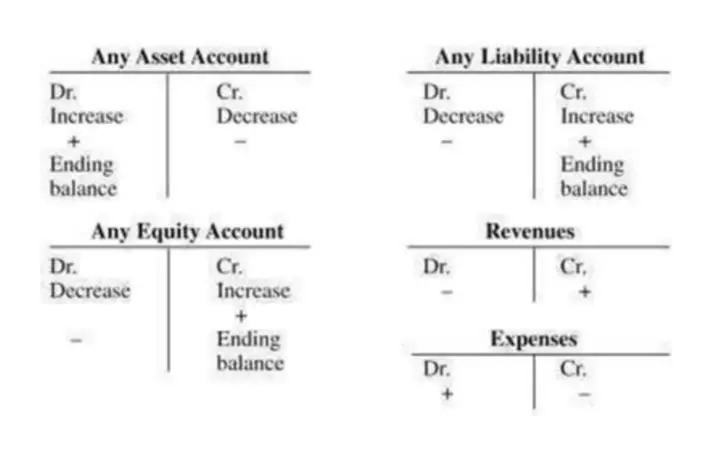Content

Accounting TransactionAccounting Transactions are business activities which have a direct monetary effect on the finances of a Company. For example, Apple representing nearly $200 billion in cash & cash equivalents in its balance sheet is an accounting transaction. Accounting SystemAccounting systems are used by organizations https://www.bookstime.com/ to record financial information such as income, expenses, and other accounting activities. The first case denotes a debit record and a corresponding credit, indicating a net effect, which comes to zero. Although three accounts were given effect in the second case, the net entry between debit and credit is 0.
Hence, the tax authorities trust and accept the method for tax purposes. However, a single entry accounting method is less trusted and not acceptable for tax computation by the authorities. The double entry bookkeeping was introduced between the 13th and 14th centuries, and one of its first mentions is found in Luca Pacioli’s book, published in 1494. He was well-known as the Father of Accounting, and he explained the double entry accounting method in detail to readers. Thus, the asset account is increased with a debit and the liabilities account is equally increased with a credit. After the transaction is completed, both sides of the equation are in balance because an equaldebitandcreditwere recorded.
What comprises a double-entry bookkeeping balance sheet?
The key feature of this system is that the debits and credits should always match for error-free transactions. If you’re not sure whether your accounting system is double-entry, a good rule of thumb is to look for a balance sheet. If you can produce a balance sheet from your accounting software without having to input anything other than the date for the report, you are using a double-entry accounting system.
What Credit (CR) and Debit (DR) Mean on a Balance Sheet – Investopedia
What Credit (CR) and Debit (DR) Mean on a Balance Sheet.
Posted: Sat, 25 Mar 2017 17:37:54 GMT [source]
And nowadays, accounting software manages a large portion of the process behind the scenes. When you pay for the domain, your advertising expense increases by $20, and your cash decreases by $20.
Double Entry Accounting Examples
FreshBooks makes double entry accounting so easy through the approachable accounting feature it offers its customers. The double entry accounting is not just an industry standard, but created to grow any investment. Approachable accounting ensures financial reporting and bookkeeping is painless and automatic to offer trustworthy data for use by accountants and business owners. It also facilitates better interactions between accountants, financial advisors and business owners. In double-entry bookkeeping, debits and credits are terms used to describe the 2 sides of every transaction.
- Start with your existing cash balance for a given period, then add the income you receive and subtract your expenses.
- The order process, tax issue and invoicing to end user is conducted by Wondershare Technology Co., Ltd, which is the subsidiary of Wondershare group.
- Only a single entry recording the income and expenses in a cash register helps maintain the financial information to enable businesses to assess their position.
- Chart Of AccountsA chart of accounts lists all the general ledger accounts that an organization uses to organize its financial transactions systematically.
- By logging both credit and debits in a double-entry bookkeeping system, you can accurately record your financial information.
Credits and debits in double entry cannot be underemphasized. The double entry system of accounting is critical in ensuring all errors have been detected and financial statements of the business prepared accurately. At least one account will have an amount entered as a debit and at least one account will have an amount entered as a credit. Further, the total amounts entered as debits must be equal to the total amounts entered as credits. Meeting these requirements will result in the accounting or bookkeeping equation being in balance at all times. Double-entry bookkeeping refers to the 500-year-old system in which each financial transaction of a company is recorded with an entry into at least two of its general ledger accounts.
The Struggles of Private Company Accounting
For example, when people buy something, it becomes a debit from their pocket or bank account, but the product goes into their credit record as they receive it in return. Similarly, the shopkeeper records the amount on the credit side, and the product taken out of the inventory becomes a debit record. Every credit entry should have an equal and consecutive debit entry. There are always two sides to the event even if two assets are traded. When a company buys a new delivery car, it gives the car dealership cash and receives the car in exchange. One asset is going out and one asset is coming in—two sides to the transaction.

When evaluating offers, please review the financial institution’s Terms and Conditions. If you find discrepancies with your credit score or information from your credit report, please contact TransUnion® directly. Because the double-entry system is more complete and transparent, anyone considering giving your business money will be a lot more likely to do so if you use this system. However, as can be seen from the examples of daybooks shown below, it is still necessary to check, within each daybook, that the postings from the daybook balance. In pre-modern Europe, double-entry bookkeeping had theological and cosmological connotations, recalling “both the scales of justice and the symmetry of God’s world”.
Credits add money to accounts, while debits withdraw money from accounts. Peggy James is an expert in accounting, corporate finance, and personal finance. She is a certified public accountant who owns her own accounting firm, where she serves small businesses, nonprofits, solopreneurs, freelancers, and individuals. Accounting is the process of recording, summarizing, and reporting financial transactions to oversight agencies, regulators, and the IRS.
Hence, the double-entry system of accounting suggests that every debit should have a corresponding credit. Shareholders’ EquityShareholder’s equity is the residual interest of the shareholders in the company and is calculated as the difference between Assets and Liabilities. The Shareholders’ Equity Statement on the balance sheet details the change in the value of shareholder’s equity from the beginning to the end of an accounting period.
Rules of recording the transactions are decided based on the type of account. If there is a mismatch in the records, it is quick enough for accounting professionals to identify errors and rectify the same. Real AccountReal accounts do not close their balances at the end of the financial year but retain and carry forward their closing balance from one accounting year to another.

Regardless of which accounts and how many are involved by a given transaction, the fundamental accounting equation of assets equal liabilities plus equity will hold. This is a partial double entry accounting meaning check that each and every transaction has been correctly recorded. The transaction is recorded as a “debit entry” in one account, and a “credit entry” in a second account.
What Is Double Entry?
Of course, modern accounting software makes double entry so easy and efficient as you’ll also notice. In single-entry bookkeeping, you maintain a cash book in which you record your income and expenses. Start with your existing cash balance for a given period, then add the income you receive and subtract your expenses. After you factor in all these transactions, at the end of the given period, you calculate the cash balance you are left with. When you generate a balance sheet in double-entry bookkeeping, your liabilities and equity (net worth or “capital”) must equal assets.
- Shareholders’ EquityShareholder’s equity is the residual interest of the shareholders in the company and is calculated as the difference between Assets and Liabilities.
- With single entries, fraudulent activities become common, and tampering with the record is usual for companies.
- Ragusan precursor Benedetto Cotrugli’s 1458 treatise Della mercatura e del mercante perfetto contained the earliest known description of a double-entry system, published in print in Venice in 1573.
- All three are recorded in current assets so that in total, the company’s asset value has increased by Rp2.5 million.

 by Falc
by Falc
Leave a Reply